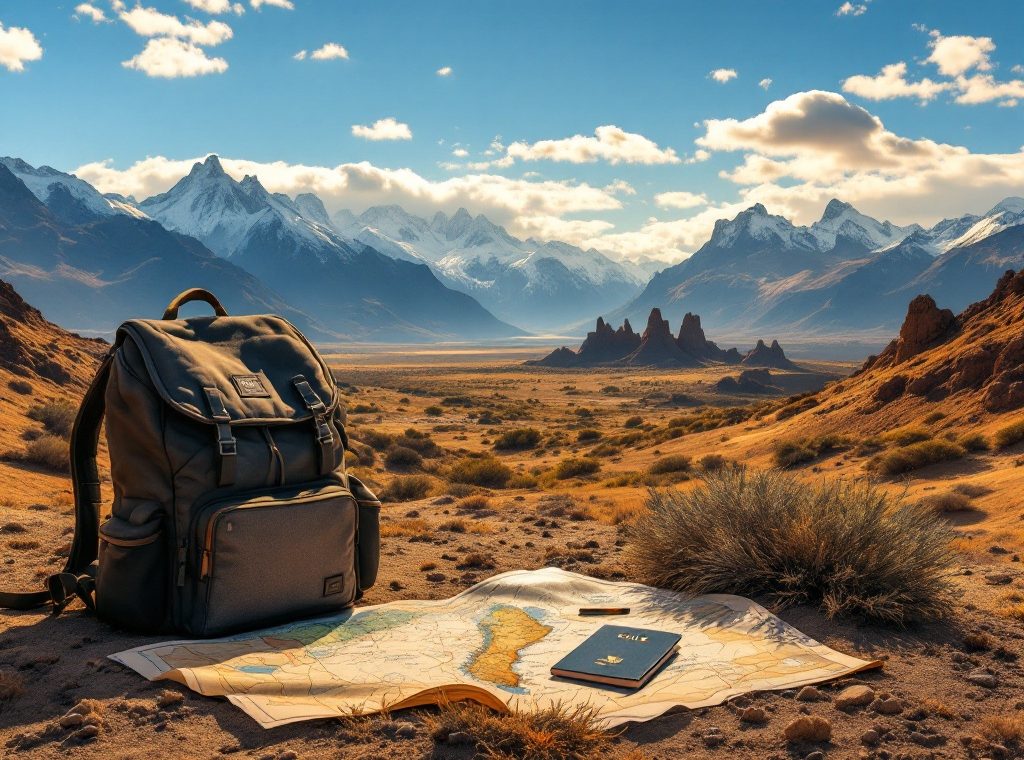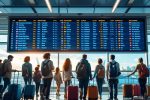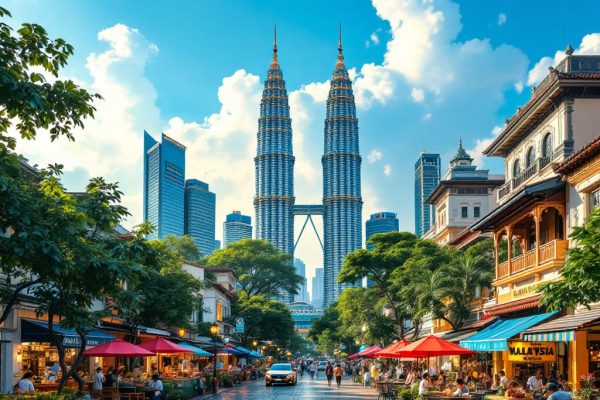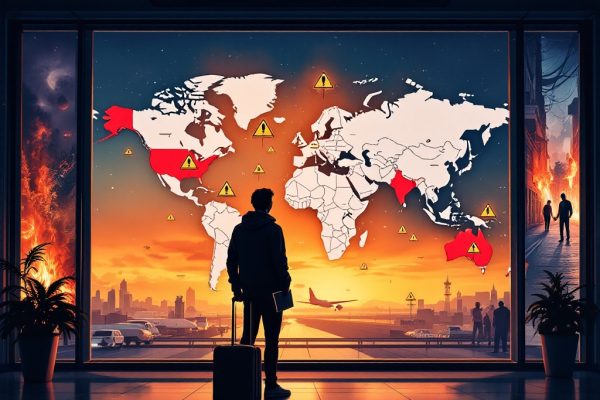How to Prepare for a Trip to Chile
Dreaming of exploring Chile’s stunning landscapes, from the Atacama Desert to Patagonia? Enjoy a 90-day visa-free stay with a simple Tourist Card, but ensure your passport is valid for six months beyond your return. This comprehensive guide provides essential travel tips, including packing advice for Chile’s diverse climate, navigating local customs, transportation options, and vital safety precautions. Prepare for an unforgettable Chilean adventure – start planning your trip today!
Important information
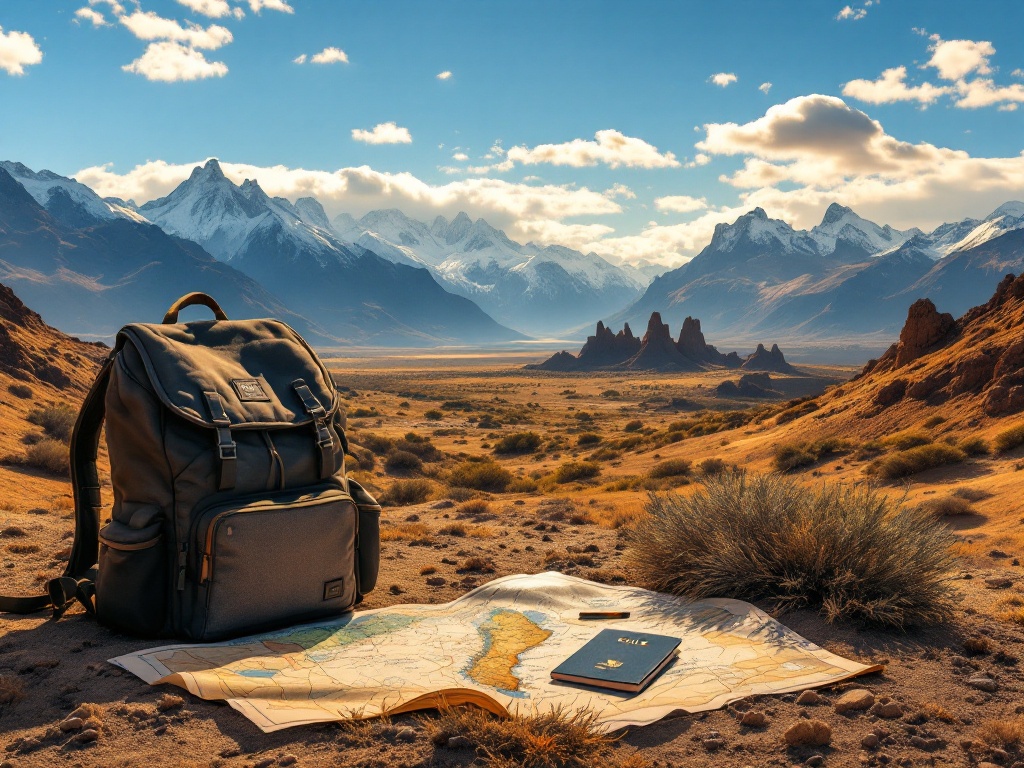
- Most nationalities can enter Chile visa-free for 90 days with a Tourist Card obtained upon arrival, but your passport must be valid for six months after your return.
- Travel insurance is strongly recommended to cover potential medical expenses, trip disruptions, or lost luggage.
- Santiago has a good public transport system. Consider using ride-sharing apps or taxis, but agree on fares in advance. Be aware of street crime and take precautions.
- Pack layered clothing for varying temperatures and essential hiking gear if you plan on exploring Chile’s diverse landscapes.
- Learning basic Spanish phrases will enhance your interactions and show respect for local culture.
Travel Planning for a Trip to Chile
Planning a trip to Chile? Most nationalities can enjoy a 90-day visa-free stay with a Tourist Card issued upon arrival. Ensure your passport’s validity extends six months beyond your return date. Travel insurance is strongly advised, safeguarding you against unexpected medical costs, accidents, or trip cancellations. Chile offers diverse accommodation options, from budget-friendly hostels to luxurious hotels. While the official currency is the Chilean peso, credit cards are widely accepted. Budgeting extra for unforeseen expenses is always prudent. Informing your bank about your travel dates can prevent card-related issues. Tipping is customary in restaurants. Navigating cities is easy thanks to public transport, taxis, and ride-sharing services. For travel between cities, buses offer a cost-effective solution, while domestic flights are convenient for longer journeys. Renting a car provides the freedom to discover Chile’s remote regions.
Visa and Entry Requirements for Chile
Traveling to Chile is easy for most visitors. You can stay for 90 days without a visa. Simply get a Tourist Card when you arrive. Your passport must be valid for at least six months after your arrival date. Travel insurance is recommended, although not mandatory.
Best Time to Visit Chile
Planning your Chilean adventure? The best time to visit depends on your destination.
Northern Chile
For the arid wonders of the Atacama Desert, visit between May and September for milder temperatures, perfect for exploration.
Central Chile
Santiago and its surrounding areas are best enjoyed during spring (September to November) and fall (March to May). These seasons offer pleasant weather ideal for city exploration and discovering nearby charms.
Patagonia
Experience Patagonia’s stunning landscapes during summer (December to February) for optimal hiking and outdoor adventures.
Patagonia Year-Round
With adequate planning, Patagonia’s beauty can be enjoyed throughout the year.
Understanding Chilean Weather Patterns
Due to Chile’s diverse landscape, weather conditions can vary significantly, including sharp temperature drops at night. Packing layers is recommended to ensure comfort and adaptability throughout the day.
Packing Tips for Your Chile Trip
When packing for your trip to Chile, dress in layers to easily adapt to the fluctuating temperatures, especially the significant drop after sunset. For exploring Chile’s stunning national parks, remember to pack these essential items:
- sturdy hiking boots,
- rain protection,
- and a reliable backpack.
Importance of Packing Layers for Climate Changes
Packing for Chile’s diverse climate requires a versatile approach due to the dramatic temperature fluctuations between its scorching deserts and chilly mountains. Layering is essential for all-day comfort. Start with a simple t-shirt, add a warm fleece or sweater, and finish with a waterproof jacket to protect against unexpected rain. This adaptable strategy ensures you’re prepared for any weather conditions.
Essential Items for Outdoor Activities and Hiking
Durable hiking boots are crucial for navigating the terrain.
Moisture-wicking clothing will keep you dry and comfortable.
A waterproof jacket offers protection from the elements.
Carry everything in a sturdy backpack.
Bring a reusable water bottle to stay hydrated.
Sunscreen, a hat, and sunglasses are essential for sun protection.
Insect repellent will keep pesky bugs at bay.
Pack a first-aid kit for any minor injuries.
For navigation, a map, compass, and headlamp are vital.
A GPS device can provide added safety and track your progress.
Understanding Chilean Culture and Etiquette
When greeting someone in Chile, a handshake is the norm, while a kiss on the cheek is common between friends. Punctuality, especially in professional settings, is highly valued and shows respect. Knowing basic Spanish phrases can significantly enhance communication, and simple greetings can create a positive first impression.
Dinner in Chile is typically enjoyed later in the evening and often involves sharing dishes, which symbolizes warmth and connection. While it’s polite to try the food offered, there’s no obligation to finish everything on your plate. These customs create a welcoming and friendly atmosphere for visitors.
Local Customs and Social Rules
Chilean greetings typically involve a handshake. A kiss on the cheek is customary among acquaintances.
Show respect by using formal titles like “Señor” or “Señora”.
Punctuality is essential, particularly in business settings.
Dinner is often enjoyed later in the evening, and sharing food is a common expression of hospitality.
Learning some basic Spanish demonstrates cultural appreciation and is always welcomed.
Tipping is customary in restaurants and for various services.
Dining Etiquette and Tipping in Chile
When greeting someone in Chile, offer a handshake and maintain eye contact to demonstrate respect.
At dinner, wait for the host to start eating before you begin.
While a 10% tip is customary in restaurants, it’s not required.
A polite “Hola” is always welcome when entering a shop or restaurant.
Learning Basic Spanish for Better Interaction
Start with basic greetings. Simple phrases like “Hola” (hello), “¿Cómo está?” (how are you?), and “Gracias” (thank you) are always appreciated and can go a long way in Chile.
Learn useful phrases for navigation and transactions. “¿Dónde está…?” (where is…?) and “¿Cuánto cuesta?” (how much does this cost?) will help you in everyday situations.
Use translation tools when needed. If you struggle to communicate, a translation app or phrasebook can be very helpful.
Don’t be afraid to practice. Chileans are generally patient and understanding with those learning Spanish.
How to Get Around in Chile
Santiago offers a robust public transport system, including an efficient and cost-effective metro and a vast bus network. using these options makes getting around the city easy and affordable.
Taxis and ride-sharing services are readily available throughout Chilean cities. for taxis, always ensure the meter is running or agree on the fare beforehand to prevent unexpected charges.
Visitors with a valid U.S. driver’s license can legally drive in Chile throughout their tourist permit. However, road conditions can vary significantly across the country, so it’s crucial to understand local driving rules.
Public Transportation in Santiago
Santiago offers a fantastic public transportation system. The extensive and efficient Metro de Santiago is a superb way to navigate the city. The bus system expands this reach, covering areas not serviced by the metro. Both are affordable choices for visitors, making exploring Santiago both easy and budget-friendly, and offering a practical glimpse into city life.
Using Taxis and Ride-Share Applications
Getting around Chile’s major cities, such as Santiago, Valparaíso, and Viña del Mar, is easy. Taxis are readily available. Ride-sharing apps like Uber and Cabify offer convenient cashless transactions and transparent pricing. While taxis usually use meters, it’s a good idea to confirm the fare beforehand, especially for airport trips. Hailing a taxi on the street is simple for quick downtown rides. Colectivos (shared taxis) are a budget-friendly option that follow fixed routes, but they can be tricky to find compared to standard taxis or ride-sharing services.
Driving in Chile: Safety and Road Conditions
Driving in Chile offers a generally safe experience, but it’s essential to be aware of the dramatically changing road conditions. While many highways are paved and well-maintained, venturing into remote areas often means encountering gravel or dirt roads. These conditions require additional preparation and careful driving.
Preparing for Border Crossings in Chile
Planning a trip to Chile? Here’s what you need to know:
Passport and Visa
Ensure your passport is valid for at least six months beyond your intended stay in Chile. Visa requirements vary depending on your nationality, so check your country’s specific regulations before you travel. Keep copies of important documents, such as your passport and visa, separate from the originals for added security.
Driving Requirements
If you plan to drive in Chile, you’ll need an international driver’s permit and your vehicle registration documents. For trips extending to neighboring countries like Argentina, Bolivia, or Peru, research their specific border crossing rules and regulations. Confirm border crossing hours of operation in advance to avoid any delays.
Safety and Health Precautions in Chile
Stay alert in cities like Santiago due to the risk of street crime, such as pickpocketing, bag snatching, and scams. Exercise increased caution in the Araucanía region due to reports of targeted incidents.
Consult your doctor about recommended vaccinations, like Hepatitis A and Typhoid, before your trip.
Pack essential medications and a first-aid kit.
Prioritize travel insurance with comprehensive medical coverage.
To prevent stomach issues, drink bottled water.
Comprehensive travel insurance is vital. It safeguards you from medical emergencies, trip cancellations, and lost luggage.
Share your itinerary with someone you trust and keep copies of important documents. Familiarize yourself with local emergency numbers and procedures to handle unforeseen events.
Street Crime and Safety Tips
Street crime is a significant problem in Santiago, so vigilance is key. Be particularly wary of carjackings and phone scams, which pose serious threats. Criminals also frequently target credit cards and homes. Protect yourself by staying alert and taking necessary precautions. Here’s how:
Be aware of your surroundings. Pay attention to the people around you and avoid walking alone, especially at night.
Secure your valuables. Keep your phone, wallet, and other valuables out of sight and close to your body.
Be cautious of strangers. Don’t interact with people you don’t know, especially if they seem suspicious.
Protect your credit cards. Be vigilant when using credit cards and be sure to cover the keypad when entering your PIN.
Secure your home. Install strong locks on your doors and windows and consider using an alarm system.
Health Concerns and Medical Care
Traveling in Chile? Here’s what you need to know about drinking water: south of Santiago, tap water is generally safe. However, if you’re heading north, bottled water is recommended for your health. Before you go, consult your doctor about recommended vaccinations and preventative medications.
Travel Insurance and Emergency Preparedness
Travel insurance offers essential protection for unexpected situations abroad. It covers medical emergencies, lost luggage, and trip cancellations. Before traveling to Chile, take these important steps:
- copy important documents,
- learn local emergency numbers,
- pack a first-aid kit, and
- research safety concerns specific to your destinations.

